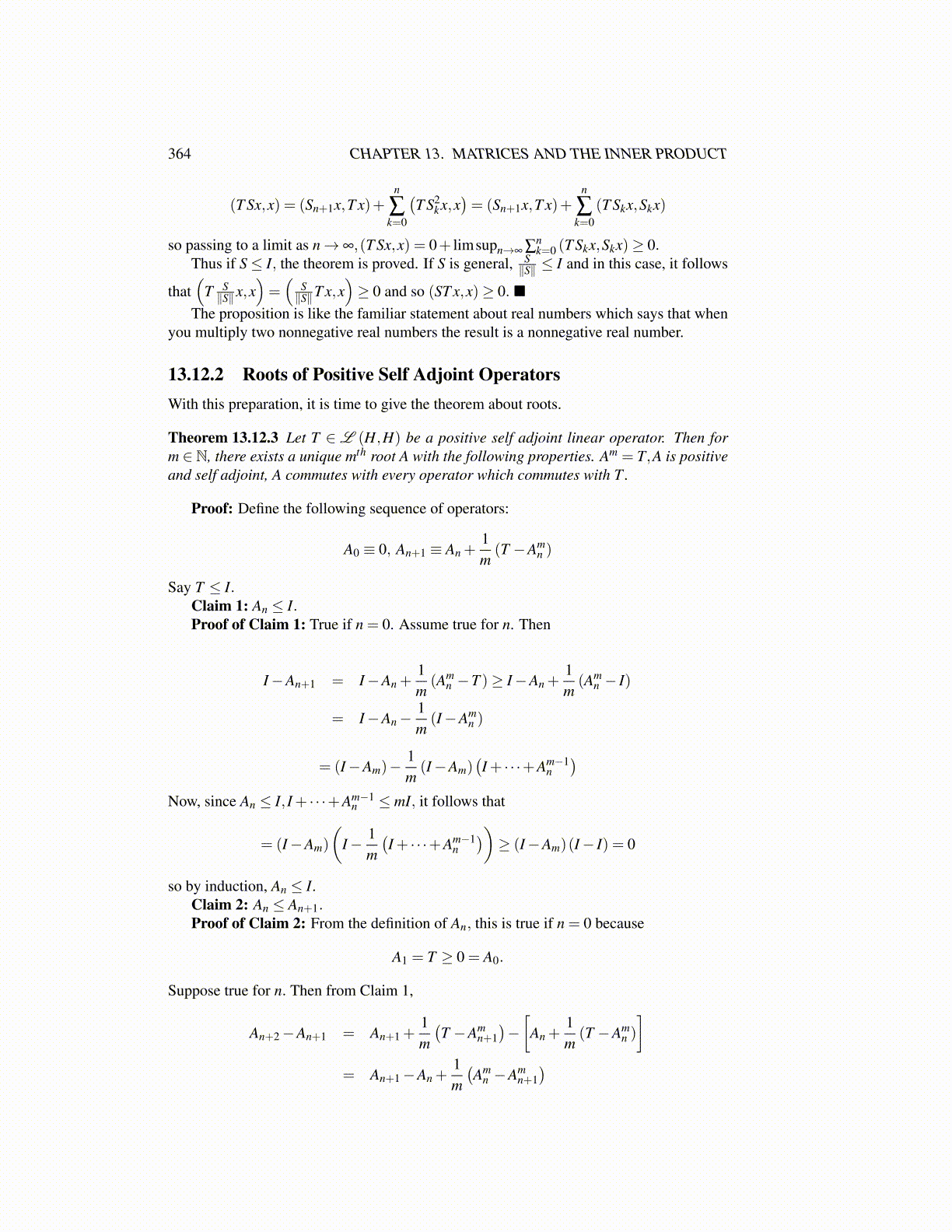
364 CHAPTER 13. MATRICES AND THE INNER PRODUCT
(T Sx,x) = (Sn+1x,T x)+n
∑k=0
(T S2
kx,x)= (Sn+1x,T x)+
n
∑k=0
(T Skx,Skx)
so passing to a limit as n→ ∞,(T Sx,x) = 0+ limsupn→∞ ∑nk=0 (T Skx,Skx)≥ 0.
Thus if S≤ I, the theorem is proved. If S is general, S∥S∥ ≤ I and in this case, it follows
that(
T S∥S∥x,x
)=(
S∥S∥T x,x
)≥ 0 and so (ST x,x)≥ 0. ■
The proposition is like the familiar statement about real numbers which says that whenyou multiply two nonnegative real numbers the result is a nonnegative real number.
13.12.2 Roots of Positive Self Adjoint OperatorsWith this preparation, it is time to give the theorem about roots.
Theorem 13.12.3 Let T ∈ L (H,H) be a positive self adjoint linear operator. Then form ∈N, there exists a unique mth root A with the following properties. Am = T,A is positiveand self adjoint, A commutes with every operator which commutes with T .
Proof: Define the following sequence of operators:
A0 ≡ 0, An+1 ≡ An +1m(T −Am
n )
Say T ≤ I.Claim 1: An ≤ I.Proof of Claim 1: True if n = 0. Assume true for n. Then
I−An+1 = I−An +1m(Am
n −T )≥ I−An +1m(Am
n − I)
= I−An−1m(I−Am
n )
= (I−Am)−1m(I−Am)
(I + · · ·+Am−1
n)
Now, since An ≤ I, I + · · ·+Am−1n ≤ mI, it follows that
= (I−Am)
(I− 1
m
(I + · · ·+Am−1
n))≥ (I−Am)(I− I) = 0
so by induction, An ≤ I.Claim 2: An ≤ An+1.Proof of Claim 2: From the definition of An, this is true if n = 0 because
A1 = T ≥ 0 = A0.
Suppose true for n. Then from Claim 1,
An+2−An+1 = An+1 +1m
(T −Am
n+1)−[
An +1m(T −Am
n )
]= An+1−An +
1m
(Am
n −Amn+1)